You’re running late for an appointment and hit a traffic jam. Or maybe someone cuts you off. How do you respond? Driving can be stressful, but feeling angry when behind the wheel could lead to aggressive driving, distracted driving or even an accident.
What Is Road Rage?
Aggressive driving can take many forms, like tailgating, weaving and speeding. It happens a lot: One survey found that nearly 80 percent of drivers expressed significant anger or aggression behind the wheel at least once over the course of the prior year. The consequences can be serious: Aggressive driving played a role in 56 percent of fatal crashes over a five-year period, according to one analysis.
Here’s what to know about road rage, including tips on staying calm and what to do when confronted with an aggressive driver.
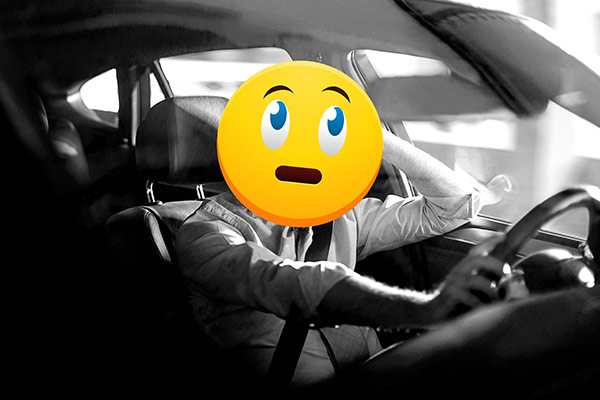 Road Rage Factors
Road Rage Factors
Here are some common factors that often contribute to road rage incidents or aggressive driving behavior.
- Traffic delays
- Heavy traffic, sitting at stoplights, looking for a parking space or even waiting for passengers can increase a driver’s anger level.
- Running late
- Running behind for a meeting or appointment can cause drivers to be impatient.
- Anonymity
- If drivers feel that they probably won’t see other drivers again, they may feel more comfortable engaging in risky driving behaviors like tailgating, cutting people off, excessive honking or making rude gestures.
- Disregard for others and the law
- Some drivers may think the rules don’t apply to them.
- Habitual or learned behavior
- For some drivers, aggressive driving may be the norm.
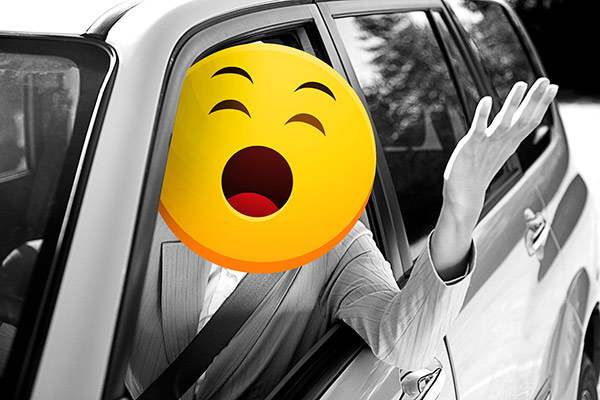 Most Common Forms Of Road Rage
Most Common Forms Of Road Rage
- Tailgating
- Yelling
- Honking in anger
- Making angry gestures
- Trying to block another vehicle from changing lanes
- Cutting off another vehicle on purpose
- Getting out of the vehicle to confront another driver
- Bumping or ramming another vehicle on purpose
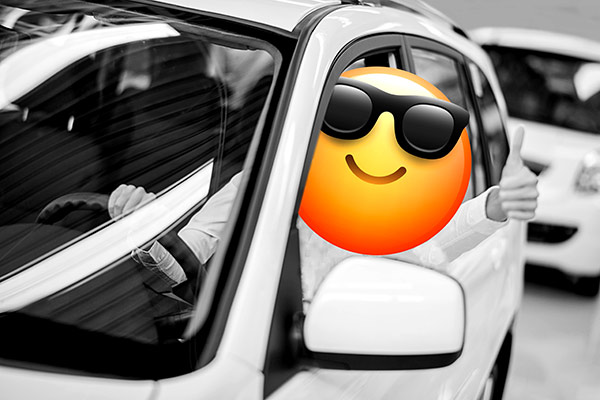 How to Avoid Road Rage
How to Avoid Road Rage
Make sure you have the right car insurance policy to protect yourself from aggressive drivers or if you find yourself the victim of a road rage incident.
Before You Get Behind The Wheel
- Don’t rush. Give yourself time to get where you’re going; you’re less likely to become impatient and take unnecessary risks.
- Cool off. If you’re upset, take time to calm down.
What To Remember When Driving
- Give other drivers a break. If someone is driving slowly, keep in mind they might be lost.
- Use hand gestures wisely. Keep gestures positive—say, waving to a driver who lets you in when merging.
- Don’t tailgate. Always keep a safe distance from the car in front, no matter how slowly they might be driving.
- Lay off the horn. Honking out of frustration won’t solve any problems; it will just increase the stress level for everyone on the road.
- Don’t stop to confront another driver. Stopping could lead to a dangerous situation for everyone.
If Another Driver Acts Aggressively
- Stay away. Safely change lanes, gradually slow down or even exit the highway to keep a safe distance from the aggressive driver.
- Don’t reciprocate. Ignore the temptation to respond to the other driver; it could cause the situation to escalate. Don’t make eye contact.
- Don’t stop. Stopping could lead to a person-to-person confrontation, which could be dangerous.
- Watch your back. If you’re worried that the other driver is following you, keep your doors locked and drive to the nearest police station.
Taking a defensive driving course could help you stay safer on the road; it could also qualify you for a discount on car insurance. Search for a course near you at geico.com.
Read more: Distracted Driving: Here’s Why You Should Pay Attention
Sources 1 National Highway Traffic Safety Administration 2 AAA Foundation For Traffic Safety 3 Insurance Information Institute

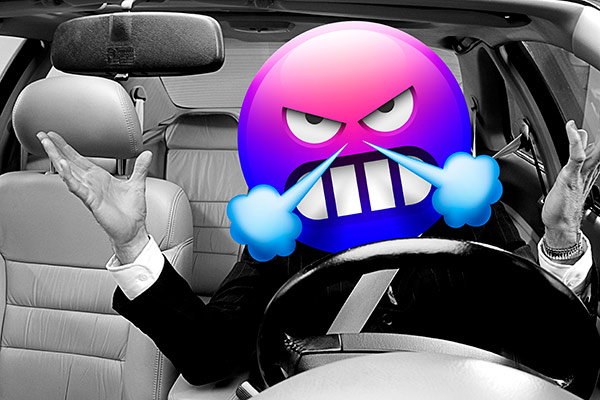


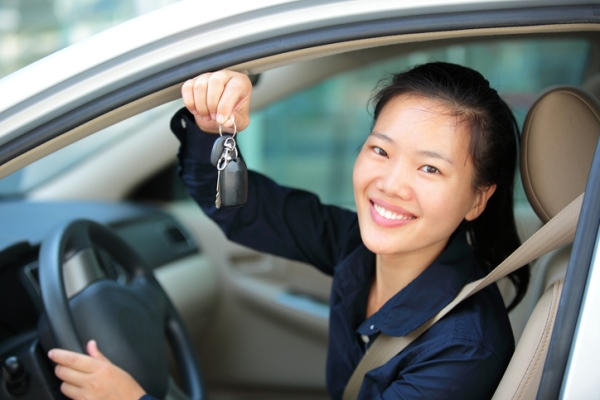



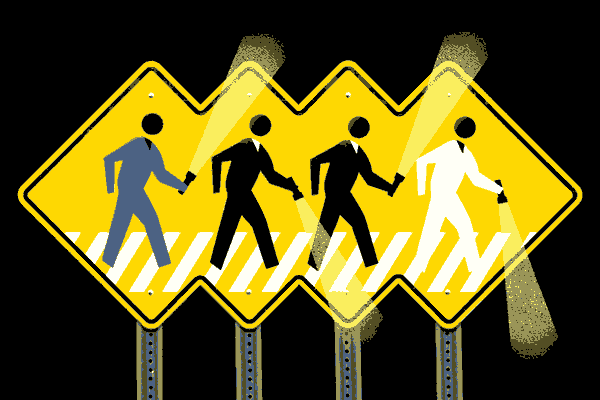
Ger says,
I used to be a real jerk on the freeway, because, Hey!, everyone does it. I would arrive at work ready bite someone’s head off and with a bad case of indigestion. One Sunday, while actually listening to the sermon at my church I had a turning point. The sermon was about “If you say you are a Christian, Show it” He said, don’t try to save the world, just grab a bag of favors, pick a small corner and start.
The next day in commute traffic as the rage started to rise………………I decided to give it a try. Instead of competing with other cars, I started to help them. I wasn’t all that good at is at first, but even on the first day, my mood improved. After a few weeks I got much better. Now not a day goes bye that I don’t have the satisfaction of knowing the road is a little better for my having been there. This isn’t saint territory, but is sure beats thinking about buying a gun.
I’ve been doing this for over 10 years now and I’ve gotten pretty good at it, but I am still improving. And it turns out there have been many other benefits from this over the years, but I’ll leave them for you to discover should you decide to give it a try. HINT: Think habitual kindness.
I know this sounds a little high handed but it’s the best way I can think to put it. “While driving I love everyone, I serve everyone and remember God (or for any of you that are easily offended, I remember gosh).
So my advise to you all is don’t just try to hunker down and avoid upsetting the baddies. Go beyond and become part of the solution. It’s not easy, but I promise you it will make your day and, perhaps, even some of the other drivers will benefit too.
John Saunders says,
Thanks for this comment. Can you tell us why you used to compete with other drivers? I’ve never understood why some people drive like that.
I also have found that cooperative driving helps everyone.
Gerald Pierce says,
I am not sure. I think that it may be a side-effect of working in a capitalist free enterprise system or maybe competitive sports You compete for business, to win games to win the girl, to get a promotion etc. I think that it gets to be a way of life and what starts out as things you do to get what you want becomes unquestioned and automatic. Notice how many of the others commenters speak about things as though “it’s you or me” while things maybe would benefit from “you and me”. I’m willing to bet that they are lost in the game and it exacts it’s price in health, harmony and well being. I thank God (or Gosh) for my old age as I can no longer pay the price of being rude to others. Decrepitude has force me into a little wisdom.
GER
Brian Hagen says,
I disagree about allowing a tailgater to control my behavior. Since I drive legally at all times, the one tailgating me is guilty of violating the law (at least here in Wisconsin), not me. When someone does this to me, I slow down even more. Soon, the perpetrator pulls over into another lane, goes around me, then proceeds with the illegal actions without involving me any more. I obey the law at *all times* while driving; if that is not good enough for others, then they can go “violate” somewhere else.
Brian says,
This is precisely the type behavior that elicits road rage to begin with. If you are not moving at the speed of the prevailing traffic, you belong ANYPLACE other than the left lane. SLOWER TRAFFIC KEEP RIGHT means that if someone “suddenly” appears in your rear view mirror, you are the slower traffic. Move over.
The police will not stop anyone going 5 or even 10 mph over the limit. Prevailing traffic CAN and will do 62 in a 55 and never get a ticket. If you’re not willing to do at least that, pokey drivers in the left lane are the problem.
In some states, drivers in the left lane holding up traffic can be pulled over and ticketed, whether they are doing the speed limit or not. Love to see that adopted everywhere.
I’m not saying driving 75 in a 55 is acceptable behavior. But 62 in a 55 is under the threshold for action by police, so if you don’t want to do that, keep your righteous indignation out of the left lane. It’s not your job to make sure no one speeds. It IS your job to avoid inciting road rage.
John Saunders says,
If you are not a law enforcement officer, then you shouldn’t be so concerned about people who violate the law by speeding. They’re not going to force _you_ to speed, are they?
Just safely get out of their way.
On the other hand, I’m really bothered by drivers who want to do 85 mph in the left lane where the prevailing speed is 75, and want me to move into the center lane where the prevailing speed is 65. I make them wait a few minutes before getting out of their way.
mmctec says,
I was behind a driver one evening who was driving at 15 mph, 25 mph below the speed limit. I was not tailgating, but decided to flash my high beams twice during a one-mile stretch to see whether he’d speed up or let me pass. He pulled over and stopped, and I passed him. He proceeded to pull out behind me and followed me for over 4 miles and I turned several times trying to lose him. Since I was in the car alone, I drove to the nearest police station and pulled up in front of the main entrance to see if that would deter the other driver, who took off, quickly. So, if you have done nothing wrong to provoke the other driver but find yourself in a scary situation, find a police station or local cop if you have problems with another driver on the road.
Ginger says,
I am sensing road rage in this forum just talking about how each one of us assumes we are right. We all know what assuming does correct? Calm down and don’t let petty winning an argument take away from the subject as a whole.
chris says,
Well said. Not to many safe smart people left. WhenI drive I say to myself I do the limit because I dont want to crash and hurt my beautiful wife and kids and others( love of self and neighbor) instead of in fear of a ticket.
Tommy Lee says,
I drive faster than 90% of the drivers out there. I stay out of the left lane if possible until I’m ready to pass someone. There is no reason to drive in the left lane unless traffic is packed.
Feline says,
I always drive in the right lane. The speed limit on the L.I.E. is 55. I never exceed 60. Still there are those “drivers” who tailgate me wanting me to go at least 70. The expressway is very stressful.
Dan says,
I am computer commuter . I drive to work , I drive to the store,I drive home. Any opportunity I get to be far from anybody that considers driving as their secondary duty,I take it. when your driving you should be driving and nothing else.If someone does something you don’t like ,breath in ,breath out and let it go .I know its a lot easier said than done especially when their driving is a danger to them selves and others.We need to remember that nobody is perfect.
Suzie Dotan says,
I do a couple of things. In addition to my blinkers, I actually stick my hands outside the window and give the old fashioned arm signals to signal a lane change or a turn. For some reason that seems to work. If I don’t use my arm, people try and close the gap up once my signal goes on.
I also have invented a don’t get to close sign. I just stick my hand out the window and throw my thumb backwards and then wave. Most people back off. I only do this if there is no option of changing lanes or if I am in the slowest lane and about to exit the freeway.
Rob Palmer says,
Give them space. They’re upset already, for some other reason. Don’t get involved! Pull over even if you have the right-of-way.
john gleaves says,
I read a comment about how one should approach a lane that has been closed so that all traffic has to merge to one lane, DR. GRIDLOCK interviewed a VA.TROOPER in his news paper article. The VIRGINIA STATE TROOPER says that motorists should use the closed down lane all the way up front to its merge point,then all cars begin an alternate merge,this speeds up traffic and also cut down on everybody wait time . only thing wrong here is enough motorists don`t about this practice.
Larry Royster says,
Drive safe ATL
luis moncion says,
I AGREE
Peggy says,
It’s really simple.
If you are speeding, it’s not anyone’s responsibility to pull over for you. It’s not anyone’s fault that you are reacting angrily; that’s on you. Is it frustrating to drive behind a slow driver? Of course!
When it is safe and the slower driver does pull over or (safely) moves into the right lane, be grateful. Smile. Resolve to leave earlier next time. If you are late for your appointment or are an impatient person, that’s your responsibility, not all the other drivers on the road, even if they are moving slower than molasses in January.
If you are driving slowly, pull over or move into the right lane if and when it is safe. This is a courtesy in keeping with the law, not an entitlement of the angry speeding unsafely tailgating driver. And if someone is tailgating, following or otherwise bullying you, drive into the parking lot of the nearest police station. I’ve done it more than once.
Yes, in most states the left lane is for passing. Face it folks, plenty of speeding and otherwise unsafe drivers like to “live” in the left lane, too.
How about facing some other hard facts: Are you angry at a friend, co-worker, family member? Are you going through stressful times? Have you been treated unfairly, or otherwise wronged? Isn’t it easier getting angry at anonymous drivers than to be honest with yourself about the source of your emotions and deal with your situation appropriately?
I, too, am grateful that you chose to highlight this important topic, GEICO. Kudos to you!
Ed B says,
I am sorry for my bad driving.